The week at a glance
- Barrow's Goldeneye still in County Down
- Possible Pacific Diver in Dumfries & Galloway
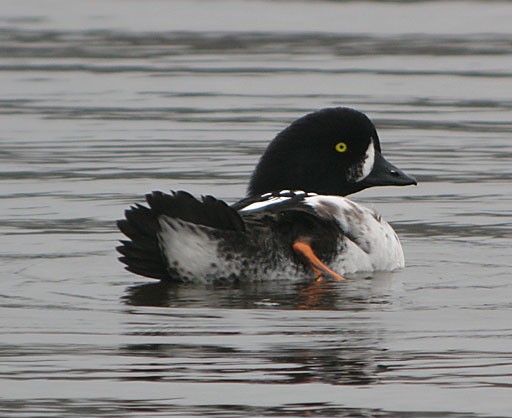
Barrow's Goldeneye, Quoile Pondage, Down (Photo: Tristan Reid)
What a difference a week makes... Last week, the headlines were choc-a-bloc full of high-quality rarities, albeit lingering stars, but there was plenty on offer for those requiring "megas". This week, all those offers seem to have been withdrawn, and the Ides of March sale has become a case of "everything must go" (or if not going, not reported...). It has been a long time since the drake Barrow's Goldeneye at Quoile Pondage (Co. Down) has had the stage to himself, but that seems to be the case this week - the only real "mega" of the week was still residing on his, now traditional, winter home until 19th. The only other potential headline maker was a "possible" Pacific Diver seen on Loch Ryan (Dumfries & Galloway) on 16th but a search on 18th yielded nothing. In north Norfolk, the adult male White-crowned Sparrow has indeed left Cley. There is some debate locally as to his last confirmed date, with March 10th now in the frame rather than the 12th. Whatever the last confirmed date, the village is not going to be quite the same without him...!
Spring migrants are beginning to arrive with a vengeance. Sand Martins and Wheatears are now well established deep into Scotland, and the first Swallows are being reported from southern England. Notable was a Ring Ouzel in Cumbria, present since 17th, and a Common Swift over the Isle of Wight also on 17th.
There was barely a seabird of note this week. Three Pomarine Skuas were noted, two in Kent (at Higham Bight on 13th) and one in Suffolk (off Thorpeness on 14th) were all that was on offer.

Cattle Egret, Llandre, Ceredigion (Photo: John A Davis)
With spring edging ever closer, dozens of Cattle Egrets were still very much in evidence as the inevitable "are they going to breed?" question became more and more interesting. It was still Cornwall that ruled the roost as far as the highest single flock was concerned - 16 birds remained around Sancreed to 15th at least. Two birds were seen again at Hay, near Wadebridge, on 16th, while the lone bird at Stithians Reservoir was still present from 13th-19th. In Devon, six birds were noted at Warleigh Point from 14th-17th at least (in the company of up to 45 Little Egrets). In north Devon, five birds were again seen in the Southcott Valley, near Bideford, on 16th (with two birds at nearby Fremington on the same day). Down in the South Hams, four birds were again noted on the Kingsbridge Estuary on 16th and three birds were at Aveton Gifford on 18th, while one or two birds were seen around Axmouth and Colyford, in east Devon, for much of the week. On 19th, a Cattle Egret was seen in Exeter, a "new" sighting for the county. Once again, there seemed to be just one bird on offer in Somerset this week, at Muchelney (and nearby Wet Moor) on 15th-17th. In Dorset, last week's five birds became this week's three birds - the individual at East Holme present on 15th-18th, with two still near Weymouth, at Nottington, to 19th. The single Cattle Egret remained at Harbridge (Hampshire) to 13th, while in West Sussex one was still at East Lavant to 19th. In East Sussex, one remained near Piddinghoe until 15th and two were seen at Pevensey Levels on 18th.The long-staying bird at Fretherne (Gloucestershire) was present to 16th while in Cheshire, one was still being seen at Higher Poynton to 19th. In Wales, at Llandre near Aberystwyth (Ceredigion), a Cattle Egret was present on 13th-19th (having been last reported back in early February), while in Ireland, a flock of eight birds were still at Ballycrompane (Co. Waterford) on 17th (these birds have been present for a month or so now).

Night Heron, Mere Sands Wood LWT, Lancashire (Photo: Stephen Tomlinson)
As with last week, at least five Great White Egrets were noted, with familiar birds remaining at this week at Shapwick Heath NNR (Somerset) and Pymoor (Cambridgeshire) for much of the week. A two-day bird at Watermead CP (Leicestershire) on 13th-14th was a decent inland find in the heronry there, while a bird found at Howden's Pullover (Lincolnshire) on 16th added to the rarity roll-call for the site in recent weeks. In Norfolk, a Great White Egret was again noted at Bintree Mill on 17th. This bird has been present, albeit very infrequently, since at least 21st January, when it was seen briefly at nearby Guist. Another Norfolk record came from Downham Market on 18th. Up to 18 Spoonbills were seen during the course of the week, with nine birds in the Middlebere channel, Poole Harbour (Dorset) on 14th being the highest tally of the week. Other notable records this week included one over Bishop Middleham (Co. Durham) on 15th, one (or two) in Norfolk, at Breydon, then at Heigham Holmes; also on 15th, and singles on Scilly and in County Cork. The Spanish-ringed Glossy Ibis at Howden's Pullover (Lincolnshire) remained to at least 18th. It has emerged that this bird was actually one of the two birds seen at the start of the year in County Wexford, so one wonders where it went between the Slobs and the Pullover. In Lancashire, at Warton Marsh, the second-winter bird was still present; also to 18th. More roaming Common Cranes were noted this week - flyovers were seen at North Warren RSPB (Suffolk) and North Thoresby (Lincolnshire), while three birds arrived at Pulborough Brooks RSPB (West Sussex) on 18th, remaining to the following morning before departing high to the southeast. Two more Common Cranes arrived at Queen Elizabeth II CP (Northumberland) on 19th. In the Norfolk Broads, several small groups were seen in the week, and 28 were seen over Horsey Mere on 19th. In Staffordshire, a White Stork was seen over Trentham Gardens, Stoke-on-Trent, on 16th and then over nearby Westport Lake the following day. Also on 16th, a White Stork was seen in Lancashire, over Brockholes Quarry and then, 43 minutes later, at Whalley. What was presumably the same bird was then seen over the Spotland Stadium, Rochdale (Greater Manchester) an hour or so later, and was arguably the most exciting thing seen at that particular football ground in some while... The probable North American Night Heron remained at Mere Sands Wood LWT (Lancashire) from 13th-17th and was still generating some interest in terms of subspecific identification and also its origins.
Another species whose origins are often discussed is Ross's Goose, and this week at least three birds were still hanging on with their local Pink-footed Geese. In Lancashire, a Ross's Goose was at Cumming Carr on 13th, while two birds were still in Norfolk - at Holkham Freshmarsh on 14th-18th, with another at Heigham Holmes on 13th-18th (and at Waxham on 16th). The final report of the week came from Kirkbride (Cumbria) on 19th. Alongside the east Norfolk Ross's Goose was the east Norfolk Snow Goose; also at Heigham Holmes and Waxham. The only other Snow Geese this week was the intermediate adult at Meikle Loch (Aberdeenshire) on 16th. A "Richardson's" Canada Goose was still to be seen around Ballyconnel and Ballintemple (Co. Sligo) from 15th-17th while the only other unusual geese this week were the three or four Black Brants reported - one still remained in Devon, another lingered in Suffolk and two or three were still along the north Norfolk coast (as well as those look-alike hybrid adults).
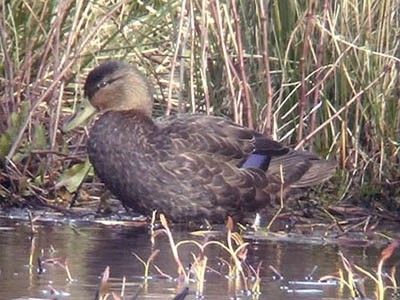
Black Duck, Marloes, Pembrokeshire (Photo: Steve Evans)

Ring-necked Duck, Race Course Lough, Fermanagh (Photo: Derek Charles)

King Eider, Troon, Ayrshire (Photo: Thomas Cameron)
Wales' third, and Pembrokeshire's second, Black Duck (a female) was found at Marloes Mere on 16th and was still present to 19th. Birders in the county are in something of a rich vein of form right now - Black Duck, Pacific Diver and Pechora Pipit all within the last six months, along with Rose-coloured Starling, Ring-billed Gull and Great Grey Shrike to add to an impressive recent haul. A drake American Wigeon was found on Loch Bee, South Uist (Outer Hebrides) on 19th, the only record of the week for the species. A baker's dozen drake Green-winged Teals remained dotted around the country this week, and included a trio of birds on Orkney. On 18th, one was at Wester Sand, Holm and on 19th singles on Mainland were at Loch of Brockan, Finstown and also at Tankerness. Other familiar birds remained at Stanwick GP (Northamptonshire) to 16th, Marshside RSPB (Lancashire) to 18th and Eyebrook Reservoir (Leicestershire) to 19th. Seven "new" birds were seen too - at Lurgangreen (Co. Louth) on 15th-19th, at Rossie Bay (Fife), Loch of Strathbeg RSPB (Aberdeenshire) and Milford (Surrey) on 16th, at Villierstown Quay (Co. Waterford) and Gart Loch, near Callendar (Forth) on 17th, with the final drake of the week noted on Loch an t-Saile, South Uist (Outer Hebrides) on 19th. After just two Lesser Scaup last week, seven birds were reported over the course of this week. The drake remained at Soulseat Loch (Dumfries & Galloway) from 13th-19th, while other Scottish drakes were at Loch Leven (Perth & Kinross) on 13th and on Loch Fada, Benbecula (Outer Hebrides) on 18th. A drake Lesser Scaup spent a day at Alvecote Pools (Warwickshire) on 14th, while on 15th a drake appeared at Blagdon Lake (Somerset) and remained until 19th. In Ireland, a drake was again on Lough Arrow (Co. Sligo) on 15th and the female was still present on Clea Lakes (Co. Down) to 18th. Seven Ring-necked Ducks continued to make the news this week, with three birds in England, one in Scotland and three in Ireland. The lingering male in Buckinghamshire remained to 15th, while females were at Bassenthwaite Water (Cumbria) to 15th and Stithians Reservoir (Cornwall) to 19th. Another long-staying female was at Loch Morlich (Highland) on 16th-18th (this bird was last reported on January 30th). In Ireland, the female at the Racecourse Lough in County Fermanagh was still present to 17th, while drakes were at Lough Bo (Co. Sligo) on 14th-16th and at Lough Ourna (Co. Tipperary) on 15th. The lovely adult drake King Eider remained at Troon Harbour (Ayrshire) to 13th while the first-winter drake was still being seen around the Taw/Torridge Estuary (Devon) from 13th-18th at least. On Shetland, the drake King Eider remained at Mousa to 18th. Three first-winter female Surf Scoters were noted along the south coast this week - a new bird was discovered off Ovingdean (East Sussex) on 15th, and was still present to 19th. Others remained off West Bexington/Abbotsbury (Dorset) to 16th, as well as Dawlish Warren (Devon) to 19th. Way off to the northwest another first-winter female was on Tiree (Argyll) to 18th. Rather more handsome adult drakes were seen off Ruddon's Point (Fife) on 14th and Finstown (Orkney) to14th and Dornoch (Highland) from 15th-17th. In Ireland, the two female-type Surf Scoters remained off the coast in Galway until at least 16th.
Four or five Rough-legged Buzzards were noted this week, including a couple of birds in southern counties, both on 17th; one flew over Stanpit Marsh (Dorset) and another, a juvenile, was seen at Orcombe Point (Devon). In Norfolk, the juvenile remained around Burnham Norton and Scolt Head Island (Norfolk) to 16th, while one (the same one?) was seen over the Great Ryburgh raptor watchpoint on 17th, heading northwest. In Cleveland, the wintering Rough-legged Buzzard remained around Sleddale to 15th. Ospreys continued to ease their way back in to the country this week, with birds noted in Somerset, Borders, Lothian and Berkshire.
Shorebirds of note were in short supply this week. The two first-winter Spotted Sandpipers remained at Lisvane Reservoir (Glamorgan) to 16th and Kinneil Lagoon (Forth) to 19th. In Devon, the first-winter Long-billed Dowitcher was still at Bowling Green Marsh RSPB from 14th-18th.

Franklin's Gull, Keynsham, Somerset & Bristol (Photo: Darren Pearce)
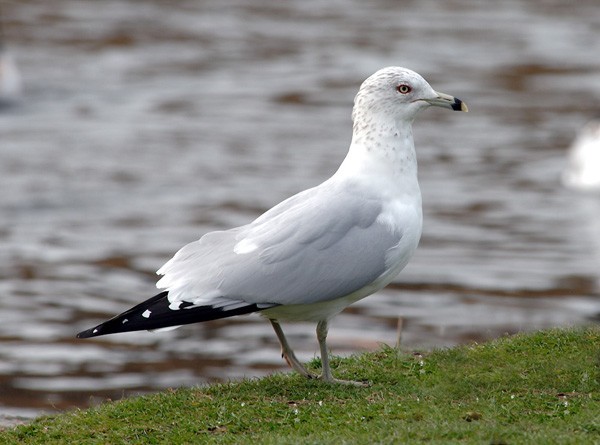
Ring-billed Gull, Beddmanarch Bay, Anglesey (Photo: Alan Burfitt)

Glaucous Gull, Gorleston-on-Sea, Norfolk (Photo: Mike Parker)

Iceland Gull, Stonehaven, Aberdeenshire (Photo: Micky Maher)

Kumlien's Gull, Killybegs, Donegal (Photo: Derek Charles)
After almost a month of no reports the second-winter Franklin's Gull was seen again in Somerset this week, at Portishead on 15th, in the docks at Portbury the following day and then at Keynsham on 18th-19th. In Scotland, an adult Bonaparte's Gull was seen at Loch of Strathbeg RSPB (Aberdeenshire) on 16th. Around 13 Ring-billed Gulls this week included new birds in County Cork, an adult, at Castletown Bearhaven, on 14th, a first-winter at Lough Foyle in County Donegal, and an adult at Slapton (Devon) both on 16th, with another new adult at Loch Broom (Highland) on 18th. First-winters at Stithians Reservoir (Cornwall) and Lamby Lake (Glamorgan) remained to 17th and 18th, while the second-winter bird at Penrhos CP (Anglesey) remained to 19th. Two birds, a first-winter and a second-winter, where in Cork City on 14th. Two American Herring Gulls (the juvenile and adult) remained at Nimmo's Pier (Co. Galway) to 15th, with the juvenile still present to 17th at least. Dropping from some 25 birds last week to just a dozen or so this, Caspian Gulls were seemingly hard to find. At least three were again at Minsmere RSPB (Suffolk) on 13th (with two third-winters and one second-winter continuing the impressive passage through the site of late), while three different birds were seen at Moore NR (Cheshire) during the week. The bird reported last week as a Caspian Gull was re-identified from photographs as a Herring Gull. Around 60 Glaucous Gulls were seen during the week, one of the lower tallies for many weeks. Six birds were at Killybegs (Co. Donegal) on 14th, while five birds, all juveniles, were at Butt of Lewis, Lewis (Outer Hebrides) on 16th. Four juveniles were at Ardivachar Point, South Uist (Outer Hebrides) on 18th and Cowpen Bewley (Cleveland) on 19th."Threes" were seen at Wheldrake Ings (North Yorkshire) on 13th and at Linton Lane (Northumberland) and Strathclyde Loch (Clyde) on 14th. Iceland Gull again made it to three figures this week, thanks mainly to the 15 birds still around Killybegs on 14th and 14 birds at Nimmo's Pier (Co. Galway) on 17th. At least six birds were at Stornoway, Lewis (Outer Hebrides) on 14th and five birds were seen off Mousehole (Cornwall) on 13th. Several birds were noted in Cleveland and three were on St. Mary's (Scilly) on 16th. There were up to six Kumlien's Gulls this week, with three birds in Ireland (at Cork City, Nimmo's Pier and Killybegs), while the dark second-winter was again at Stranraer (Dumfries & Galloway) on 16th. An adult Kumlien's Gull was at Dix Pit (Oxfordshire) on 17th, with perhaps the same bird then seen at Draycote Water (Warwickshire) on 19th. The adult Forster's Tern remained on Strangford Lough, at Killyleagh Harbour (Co. Down), to 18th and the bird in Galway Bay was still present to 17th (suggesting that the bird in County Clare last week was a new bird after all).
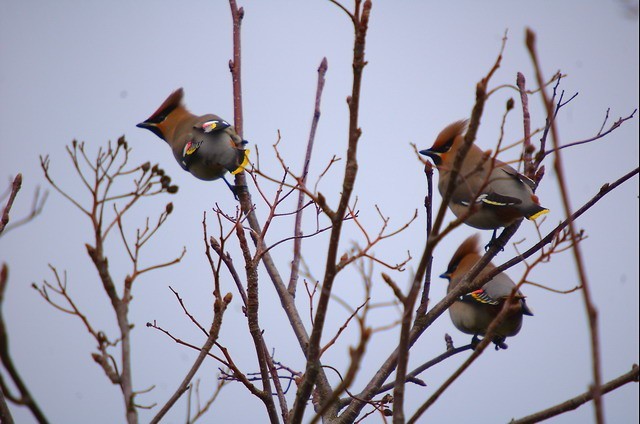
Waxwing, Cutthorpe, Derbyshire (Photo: Jim Morris)

Dark-breasted Barn Owl, Cotswold Water Park, Wiltshire (Photo: Martin Adlam)
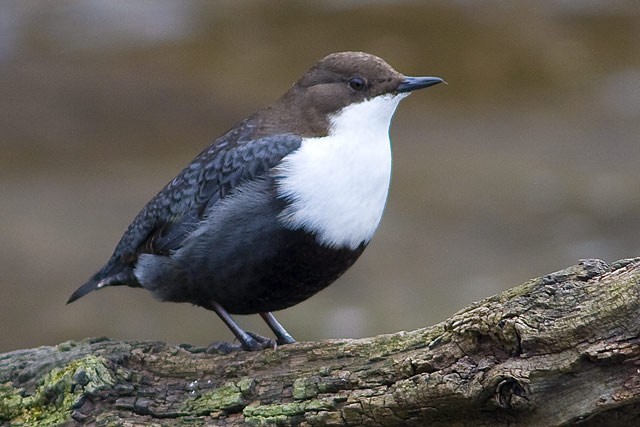
Black-bellied Dipper, Watton, East Yorkshire (Photo: Paul Bagguley)
An Alpine Swift was seen for ten minutes at East Pentire, Newquay (Cornwall), on 15th, an early date, but March records aren't that unusual (five birds were seen in March 2004 alone and a flock of five were seen over Cork in March 2002, part of an invasion of 15 birds). The Richard's Pipit was still being seen at Howden's Pullover (Lincolnshire) to 19th, while the bird at Auchmithie (Angus) was seen on 12th. It was a rather better week for Waxwings than of late, as birds resurfaced as they, presumably, start their trek north. Up to 78 birds were noted, with 24 in Dunblane (Forth) from 14th-19th and 24 at Esh Wining (Co. Durham) on 16th the largest flocks noted, with 11 still at Longforgan (Perth & Kinross) remaining to 18th. Others were noted in Derbyshire, East and North Yorkshire. The two presumed guttata Dark-breasted Barn Owls remained at Wacton Common, Long Stratton (Norfolk) to 14th and Cotswold Water Park (Wiltshire) to 16th. In East Yorkshire, the Black-bellied Dipper was still at Watton to 19th.
After no reports at all for the previous week, the Hume's Yellow-browed Warbler at Tehidy CP (Cornwall) proved that it hadn't gone anywhere, being seen from 13th-19th, while the bird at Stockton-on-Tees (Cleveland) was also present to 19th. Yellow-browed Warblers could manage just two birds this week, the birds in Hereford (Herefordshire) and Plymouth (Devon) present to 14th and 15th respectively. The Pallas's Warbler found last week at Weymouth (Dorset) was still present to 16th.
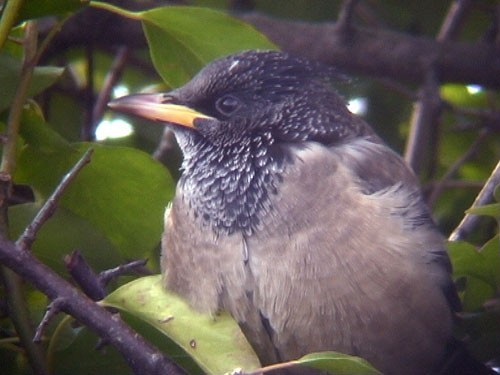
Rose-coloured Starling, Haverfordwest, Pembrokeshire (Photo: Steve Evans)

Great Grey Shrike, Ty-Rhyg, Pembrokeshire (Photo: Richard Crossen)
The Chough at Warton Crag (Lancashire) was still present, off and on, to 19th, while in Wales, the Rose-coloured Starling remained at Haverfordwest (Pembrokeshire) to 19th, when it was heard to sing. Some 17 Great Grey Shrikes were still being seen across England, Wales and Scotland this week - with Norfolk, Nottinghamshire and Gloucestershire all claiming two birds apiece.
Photo of the Week

Goldcrest, Upper Boddington, Northamptonshire (Photo: Barry Boswell)
Anyone who has tried to photograph Goldcrests will have come across two real challenges: the first is the diminutive size of this species, which means you need to get very close to capture any detail; the second is that they never seem to stay in one place for longer than a millisecond. Getting any kind of a shot is therefore an achievement but, with his delightful portrait of a Goldcrest feeding on aphids, Barry Boswell has gone far beyond a basic shot. Imagine asking someone to capture a close-up of a Goldcrest in a natural setting, in good light, and feeding on aphids. Then add that the aphids must be clearly visible and in focus and that the bird must be arranged in an interesting, dynamic pose. Oh, and obviously the crest must be nicely highlighted. And the composition should make good use of the rule of thirds. Barry makes it all look very easy!"
Other notable photos
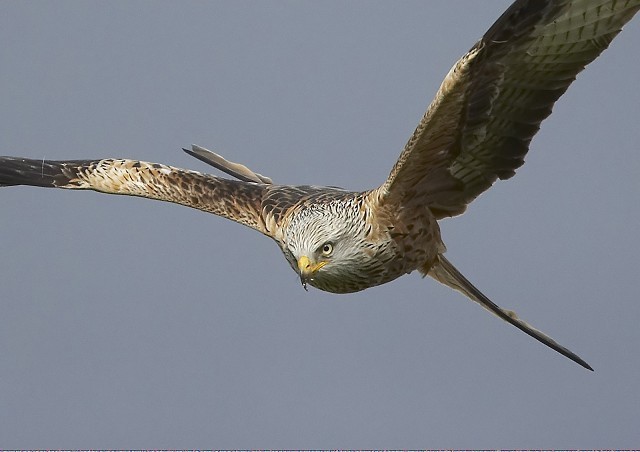
Red Kite, Gigrin Farm, Powys (Photo: Richard Bedford)

Snow Bunting, Wells-next-the-Sea, Norfolk (Photo: Mick Green)
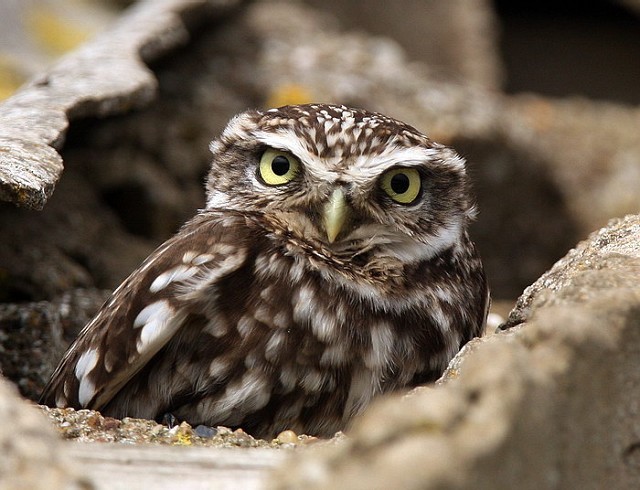
Little Owl, Nocton Fen, Lincolnshire (Photo: Dean Eades)

Knot, Seahouses, Northumberland (Photo: David Cookson)

Red Grouse, Westerdale Moor, North Yorkshire (Photo: Steve Race)

Sand Martin, Seaton, Devon (Photo: Gavin Haig)

Skylark, North Wirral CP, Cheshire (Photo: Richard Steel)

Waxwing, Dunblane, Forth (Photo: Jim Duncan)

Lapwing, Marshside RSPB, Lancashire (Photo: Tom Charles)

Siskin, Whitacre Heath NR, Warwickshire (Photo: Tom Melton)

Dipper, Slaidburn, Lancashire (Photo: Damian Waters)
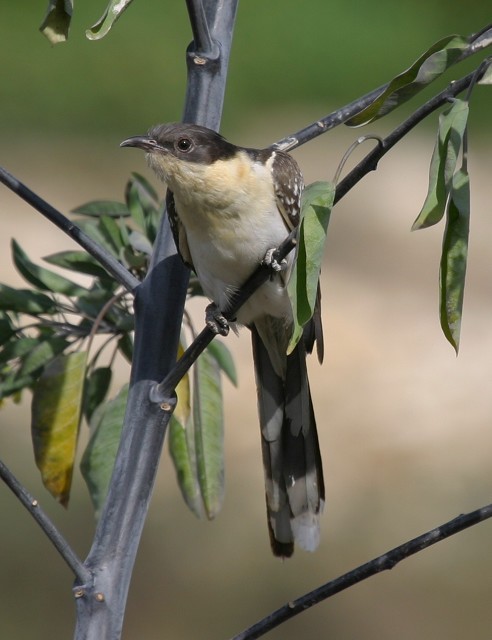
Great Spotted Cuckoo, Spain (Photo: C. David Elliott-Binns)

